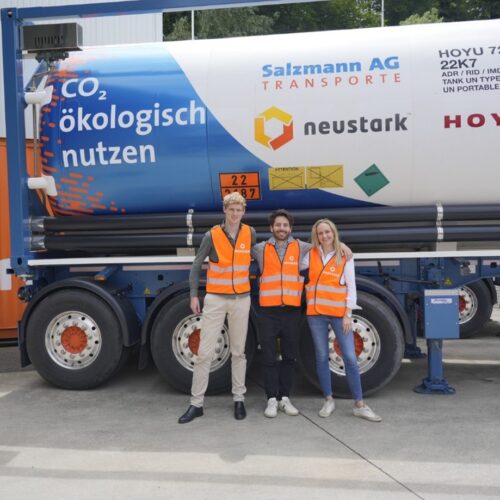
Neustark: combining carbon removal with circularity
By Rens Mathot
Did you know that the construction and demolition industry is not only the largest global emitter of greenhouse gas emissions (with a staggering 37% of the global total), but it also generates the largest waste stream worldwide? In response to these issues, Neustark’s visionary founders Johannes Tiefenthaler and Valentin Gutknecht developed a cost-efficient solution that tackles both issues by turning demolition waste streams into carbon sinks. As their Carbon Dioxide Removal (CDR) technology seamlessly integrates into their client’s existing operations, the Neustark team was able to achieve rapid growth and scalability, already making the company one of the global leaders in CDR today.
Neustark’s IP-protected process captures CO2 at the point source, binds it in demolition waste streams through an accelerated mineralization process, and stores it permanently in concrete granulates. This process ensures that the captured CO2 remains locked away for hundreds of thousands of years, effectively turning demolition waste into a long-term environmental asset. In turn, it allows the carbonated, recycled aggregate to be used for a wide range of use cases, supporting circularity in the construction industry.
Recognizing carbon removal’s crucial role in achieving net-zero goals, Blume is excited to partner with the Neustark team to further scale its CDR technology globally. Neustark’s approach to carbon removal specifically aligns with Blume’s investment philosophy: supporting tech-enabled businesses that combine scalable, measurable, and commercially viable solutions with inherent impact. Having deployed its technology across 19 sites and sold nearly 120,000 tons of carbon removal to date, Neustark already established itself as one of Europe’s fastest-growing carbon removal companies. This partnership will further accelerate Neustark’s rapid scale-up in European markets and beyond, supporting the company’s mission to permanently remove 1 million of tons of CO2 by 2030.




